The National Atomic Museum is inside Kirtland Air Force base near the
Albuquerque airport. There are exhibits on
-
Arms Control throughout the ages,
-
60's popular spy culture (Matt Helm, Maxwell Smart, Illya Kuryakin)
with toys (at least one that I had as a child),
-
atomic bomb development up to the W70s or so,
-
delivery vehicles,
-
obscure scientific instruments of the last century (including one unidentified
with a plaque reading "If you know what this is please call or e-mail"...)
-
and the "unknown" people who helped in large and small ways with the Los
Alamos projects.
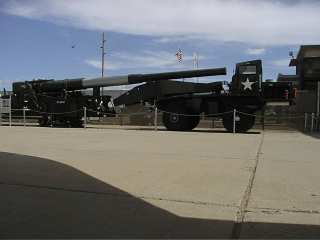 |
Out in the yard behind the museum building, I saw (mostly) actual delivery
vehicles. Below are three missiles (one on its side) and the Snark (early
cruise missile). To the left is a 288mm canon that fired a ~10kton warhead
10 to 15 miles.
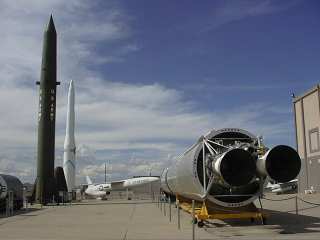 |
I just liked all the pipes and valves and stuff of this rocket motor:
 |
The Snark could carry a 10kton nuke or conventional warhead.
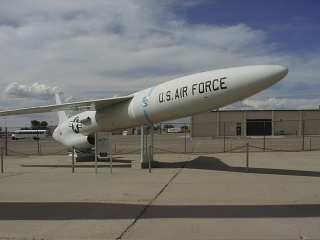 |
As everyone knows, the U238 and U235 for weapons production were (are?)
separated using a gas diffusion process. An early attempt at mass-spectroscopic
separation used the apparatus below. The whole thing (along with dozens
like it, no doubt) were under vacuum.
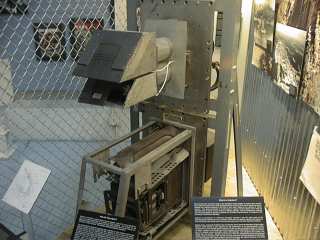 |
This is a diagram of how the mass separator worked. It's simple, really:
you ionize the U238/U235 in a plasma (at the bottom-left), and accelerate
it in a magnetic field. The two species have the same charge, but different
masses, so you collect the two with the scoops up at the top. The bad news
is that the process happens at a very slow rate, one-by-one.
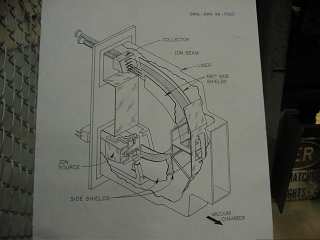 |
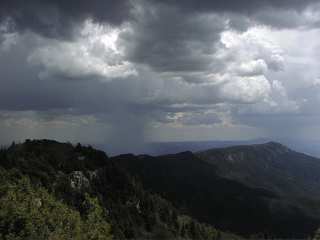 |
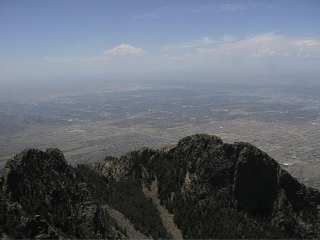 |
| These pictures were taken on Sandia Peak. There's a tram that takes
you (and 50 of your friends) from around 5,500' at the base, to over 10,000'
at the summit in about 15 minutes. Above, you can see a rain cell moving
in from the south-east. A few minutes after taking this photo, I was forced
into the visitor center at the peak. The storm cell had moved over the
peak and a cloud-to-cloud strike had generated high enough fields to cause
the superstructure members to arc-over. Way cool. Did I mention that NM
has the highest per capita rate of lightening strikes on humans in the
nation? |
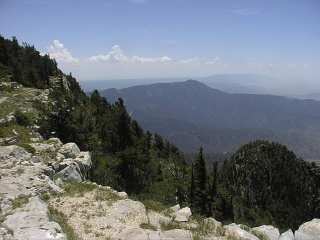 |
Mary and I drove to Taos on the "high road". Along the way, we say
this wooden aqua duct.
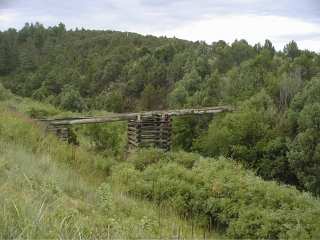 |
It's hard to see from this photo, but quite a bit of water is flowing
(maybe a couple of gallons a second).
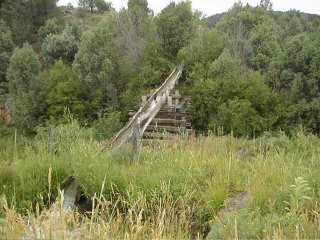 |
On the last day of our trip, Mary and I got up at 6am to drive to Bandolier
National Monument. Mary is standing about 50' from the swiss cheese-like
rock face of natural erosion. The material is volcanic ash called "tuff".
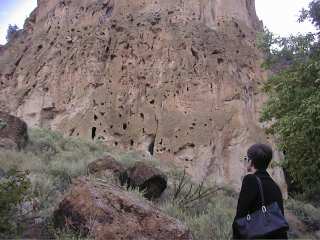 |
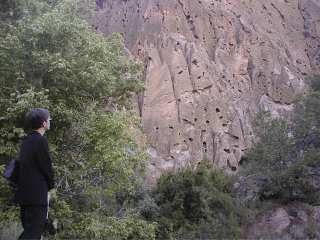 |
| The civilization that lived in this canyon lived in adobe houses against
the cliffs. They also had a ringed "apartment building" at the bottom of
the canyon (photo to the right) housing 1000 or more. Each unit was extremely
small (typically 3' by 5'). Entrance and Egress was via ceiling "doors"
as in the other pueblos in the area.
One (of hundreds) of the cliff dwellings are shown below. The caves
were actually used as the "back room" or storage areas. The main living
space was adobe structures (up to 5 stories tall) leaning again the cliffs. |
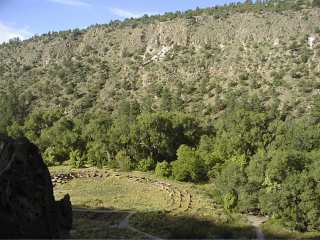 |
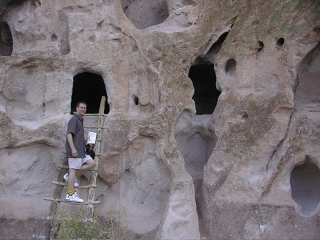 |
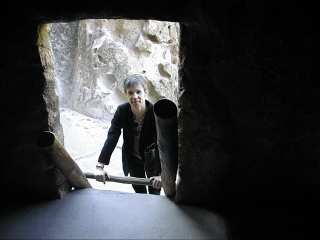 |
| The circle in the photo to the right is a Mexican string painting.
We found this and many more great art pieces in Galeria Hispanica (In the
La Fonda hotel in Santa Fe). |
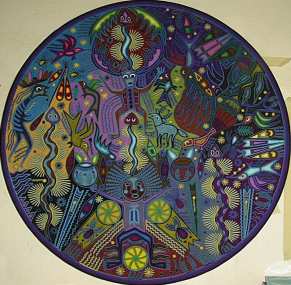 |
















